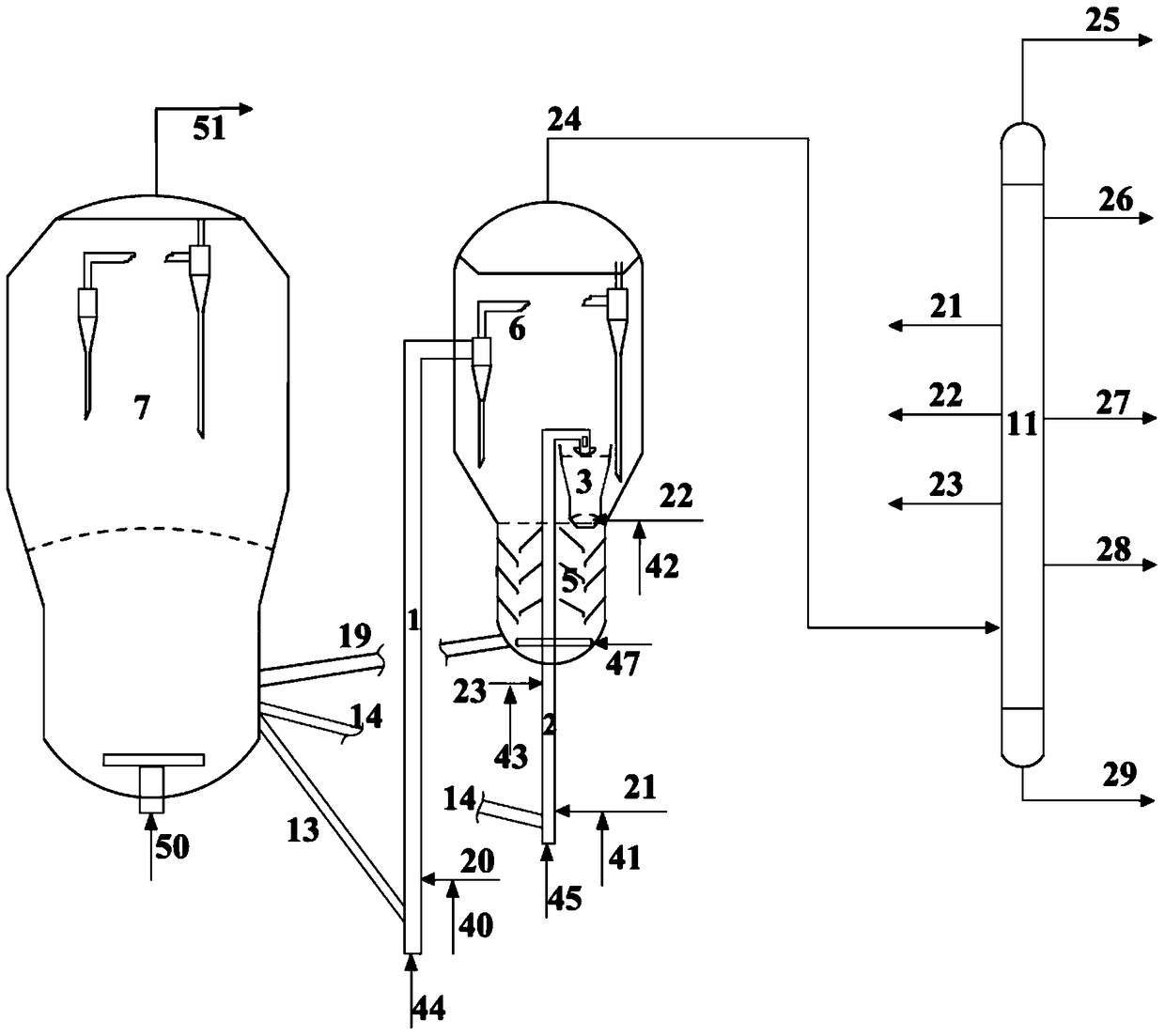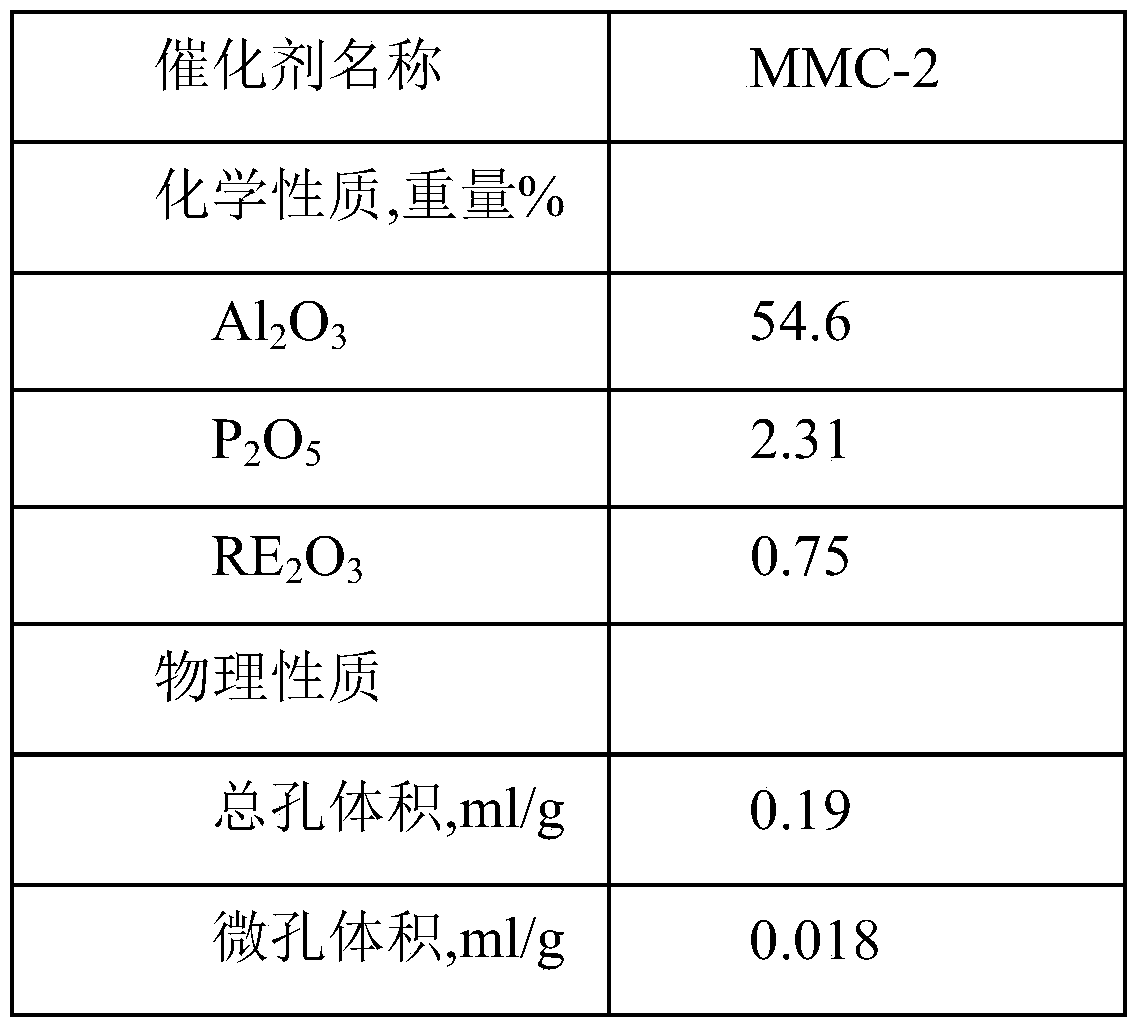A catalytic conversion method for increasing production of low-carbon olefins and producing high-quality gasoline
A catalytic conversion method and technology for low-carbon olefins, which are applied in the directions of catalytic cracking, treatment of hydrocarbon oil, and hydrocarbon oil treatment products, etc., can solve the problems such as the inability to guarantee the directness and the satisfactory output, and achieve low octane number and alkane content. high effect
- Summary
- Abstract
- Description
- Claims
- Application Information
AI Technical Summary
Problems solved by technology
Method used
Image
Examples
Embodiment 1
[0080] This example is used to illustrate the catalytic conversion method for increasing the production of light olefins and producing high-quality gasoline provided by the present invention.
[0081] Experiments were carried out with a medium-sized plant for continuous reaction-regeneration operation with three reactors, the first reactor being a riser, the riser reactor having an inner diameter of 16 mm and a height of 3800 mm. The second reactor was a riser reactor with an inner diameter of 16 mm and a height of 3200 mm. The outlet of the second riser reactor was introduced into the fluidized bed reactor, the inner diameter of the fluidized bed reactor was 64 mm, and the height was 300 mm.
[0082] The regenerated catalyst with a temperature of about 700°C enters the bottom of the riser reactor of the first reactor through the inclined pipe of the regenerated catalyst, and flows upward under the action of the pre-lift steam. Heavy hydrocarbon oil feedstock (see Table 2 for...
Embodiment 2
[0084] This example is used to illustrate the catalytic conversion method for increasing the production of light olefins and producing high-quality gasoline provided by the present invention.
[0085] The reaction apparatus that adopts is with embodiment 1. Raw material, main experimental procedure are the same as embodiment 1, and difference is that the raw material nozzle at the bottom of the second reactor riser is the starting point, and the effective length of the riser is defined as 100% along the flow direction of the raw material, and the light end fraction ( Distillation range is the initial boiling point ~ 57 ℃) into the starting point of the second riser, and the heavy fraction (distillation range is 178 ℃ ~ 253 ℃) enters 70% of the downstream of the light fraction (that is, the injection of the heavy fraction) position to the length of the reactor outlet is 30%), and the selected middle distillate fractionation range is 57~178°C. The main operating conditions and ...
Embodiment 3
[0092] This example is used to illustrate the catalytic conversion method for increasing the production of light olefins and producing high-quality gasoline provided by the present invention.
[0093] The reaction apparatus that adopts is with embodiment 1.
[0094] The regenerated catalyst with a temperature of about 650°C enters the bottom of the riser reactor of the first reactor through the inclined pipe of the regenerated catalyst, and flows upward under the action of the pre-lift steam. Heavy hydrocarbon oil feedstock (see Table 2 for main properties) is heated to about 350°C in a preheating furnace, mixed with atomized water vapor, sprayed into the first reactor through the feed nozzle, and catalyzed by contact with the hot regenerated catalyst conversion reaction. The reaction oil gas and the catalyst to be produced enter the settler from the outlet of the riser of the first reactor for rapid separation, and the reaction oil gas is further separated into gas products ...
PUM
| Property | Measurement | Unit |
|---|---|---|
| The inside diameter of | aaaaa | aaaaa |
| Height | aaaaa | aaaaa |
| Height | aaaaa | aaaaa |
Abstract
Description
Claims
Application Information
 Login to View More
Login to View More - Generate Ideas
- Intellectual Property
- Life Sciences
- Materials
- Tech Scout
- Unparalleled Data Quality
- Higher Quality Content
- 60% Fewer Hallucinations
Browse by: Latest US Patents, China's latest patents, Technical Efficacy Thesaurus, Application Domain, Technology Topic, Popular Technical Reports.
© 2025 PatSnap. All rights reserved.Legal|Privacy policy|Modern Slavery Act Transparency Statement|Sitemap|About US| Contact US: help@patsnap.com



